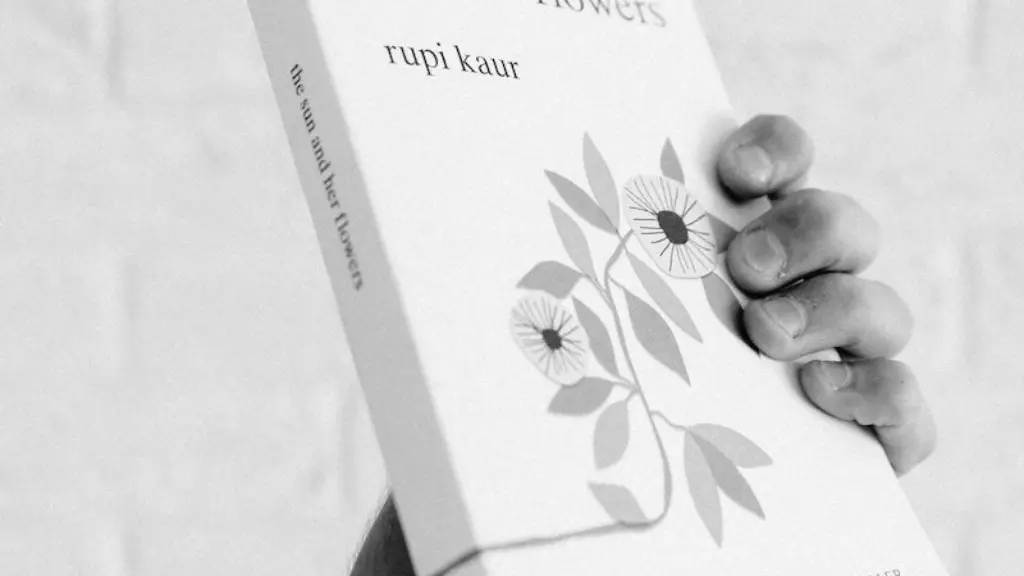Background
Music and poetry have been around for centuries, even though it is likely impossible to identify the exact time when their similarities began to be recognized. Throughout the history of mankind, poetics and music have been used in an astonishing variety of genres for similar purposes: to entertain, to describe, and to convey emotion. The comparison, however, is not merely superficial. The two forms of art have more than just a superficial connection; they actually have many structural and performative similarities.
Similarities
When comparing music and poetry, it is essential to consider the structure and composition of both forms of art. Generally, compositions of music and poetry can be broken down into two parts: melody, or the main “story” of the piece; and form, or its organization and texture. Both music and poetry can be structured in a meter, meaning they use rhythm and rhyme patterns as well as a specific verse or phrase structure. Furthermore, both music and poetry rely on metaphor, comparison and contrast to convey meaning. This also explains why both forms of art have been utilized to communicate a wide range of topics, including love, sociology, and history.
When it comes to performance, music and poetry both allow for a great degree of personal interpretation. First and foremost, performers of both forms of art must be able to deliver their composition in a way that conveys the intended message to their audience. They must be able to interpret their own interpretation of the ideas in the context of their audience. On top of that, both music and poetry also rely on intonation and pauses to add emphasis to certain passages.
Emotional Impact
One of the most prominent similarities between music and poetry is their ability to affect the emotions of the audience. Through their structure and compositions, music and poetry both seek to evoke emotion in their listening or reading audience. Music is often capable of changing it’s emotional mood over the course of its duration, but more often than not, poetry seeks to maintain its emotional intensity in order to illustrate a particular subject.
Both music and poetry also make use of repetition and contrast in order to captivate and lure their audiences in. This can be seen in the lyrics of songs, as well as the steady rhythm of musical compositions. Furthermore, both forms of art often utilize symbols and motifs to convey hidden meanings and deeper topics.
Purpose
Finally, while there are many similarities between music and poetry, one of the most important similarities is the purpose behind them. It is believed that music and poetry both arose as a form of self-expression, allowing people to express their innermost thoughts, feelings and beliefs in a format that is both meaningful and engaging. Both music and poetry seek to connect with its audiences, in order to create a feeling of understanding and appreciation between piece and listener or reader. Music and poetry provide a conduit for people to share their opinions, beliefs and experiences in a manner that is both artistically pleasing and powerful.
Cultural Significance
Music and poetry have been around since the dawn of civilization, and no doubt will continue to have a profound effect on cultures going forward. Not only do they provide the means for people to express themselves in a creative and meaningful way, but they also serve as a connection between different cultures and eras.
Music and poetry can be seen as an expression of human identity, as well as a reflection of our collective history as a species. Music and poetry bring together people from all walks of life, allowing us to connect at a deep, emotional level. Furthermore, both music and poetry are often used as a form of educational or spiritual enlightenment.
Social Organization
The similarities between music and poetry are also evident in their social organization. Music and poetry often become ingrained into the communities they influence, creating a shared experience or understanding among those who encounter them. Whether it is a lullaby passed down through generations of a family, or a popular piece of poetry shared by friends, the impact of these forms of art is often apparent in their respective social circles.
Music and poetry can also be used to galvanize and bring together like-minded individuals who may otherwise have never interacted. Through these collective efforts and shared experiences, a sense of community is granted to those involved. Music and poetry often embody the identities of those who share them, and this can often have a profound impact on their collective outlook on life.
Philosophical Meaning
Music and poetry are often seen as a form of communication that goes beyond language. As a result, they can often take on a philosophical meaning that is unique to each individual. Whether it is expressing a political stance, an opinion on life, or a reflection on personal experiences, music and poetry often serve as a platform for philosophical debate.
In many ways, music and poetry can be seen as expressions of the soul. They question the nature of life and the universe, while providing a safe space for the individual to explore the depths of their own personal truths. Through these experiences, we gain an understanding of others and of ourselves, further unifying us in our collective understanding.
Rhetorical Influence
Finally, music and poetry have also found their way into the realms of rhetoric and persuasion. Through their rhythms, melodies and metaphors, both forms of art can be used to stir emotions and guide conversations in a particular direction. Music and poetry have long been utilized by leaders, politicians and speakers for their ability to sway opinions and reach the hearts of many.
Rhetoric has also been used to manipulate and control the masses. Through music and poetry, the speakers or performers can craft their messages in a way that convinces and encourages action. This can be seen in political protests, marches, and rallies, in which music and poetry play a crucial role in inspiring and engaging audiences.
Significance of Artistic Structure
The mixture of melody, rhythm, and lyrics present in music is often also seen in poetry as well. Both forms of art employ a specific structure in order to make their messages effective. When crafted in the right way, artistic structures can be used to deliver complicated concepts with a greater depth of understanding. Additionally, they can create a sense of subtlety and mystery in the pieces, allowing listeners and readers to discover their own interpretations of them. Furthermore, when combined with a captivating performance, music and poetry can become a powerful language of persuasion.
Conclusion
Music and poetry have been a part of human life for centuries, and it easy to understand why. They share a powerful connection, from the structure of their creation to their impact on the emotional state of their listening audience. Furthermore, music and poetry both provide a conduit for people to share ideas, beliefs and experiences in a powerful way. In conclusion, it is easy to see why music and poetry have been so successful throughout the ages; their similarities allow them to inspire and engage people in a way that transcends language.


